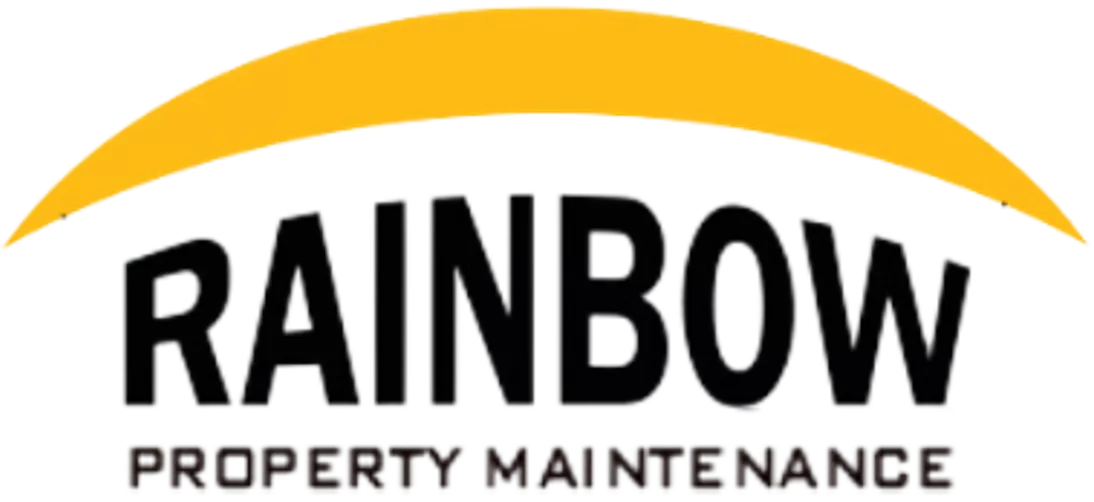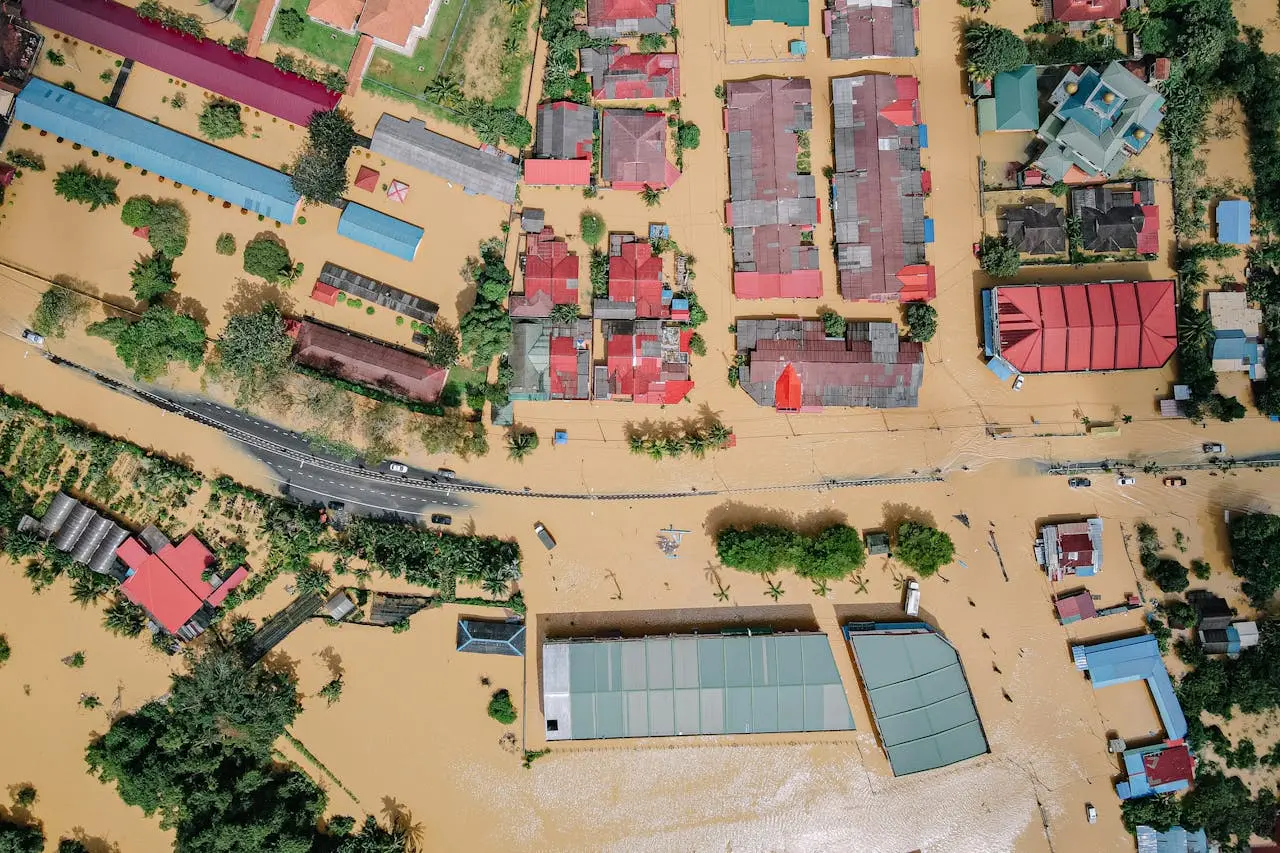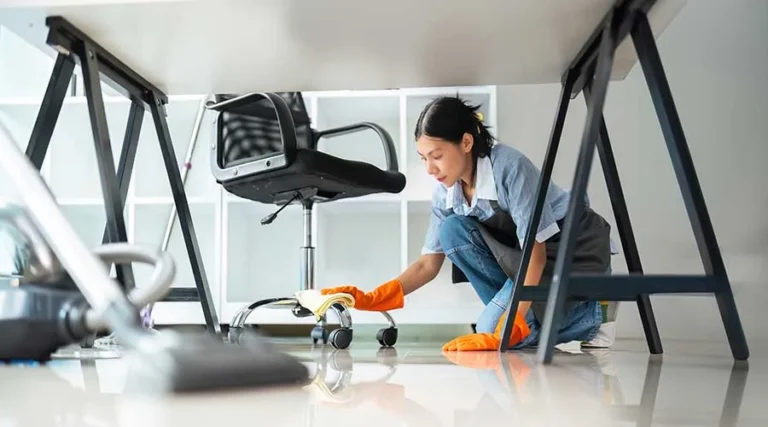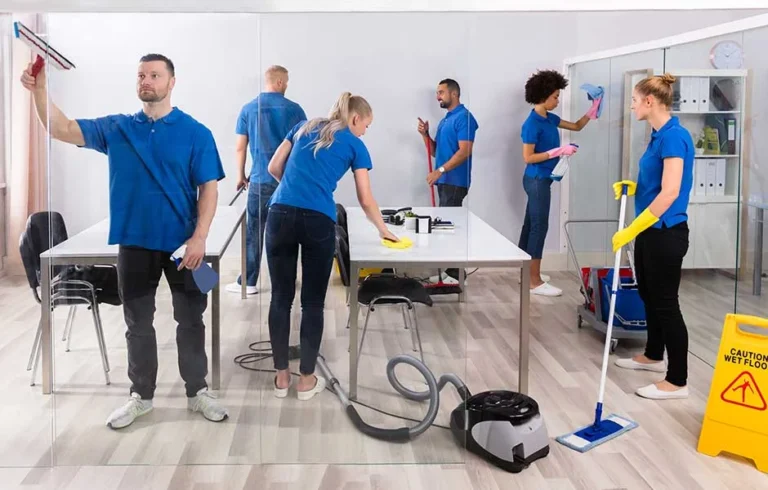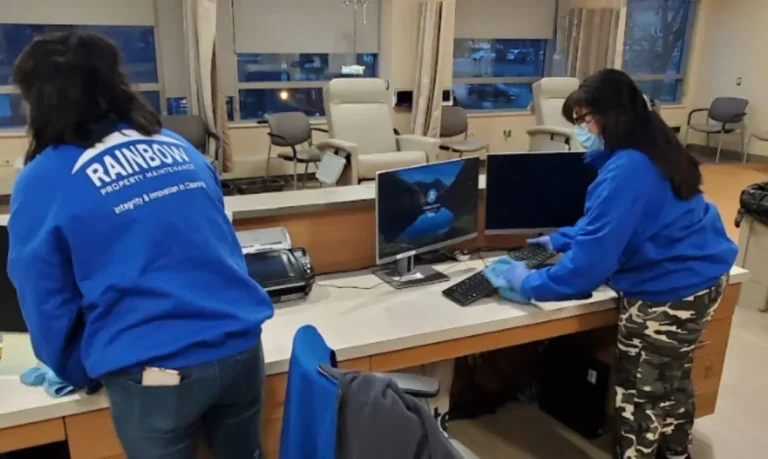Water Damage Restoration: Expert Tips for Drying, Preventing Damage, and Cleaning
Key Takeaways:
- Quick action is crucial in water damage restoration
- Proper drying techniques prevent structural damage and mold growth
- Professional cleaning of carpets and upholstery is essential for complete restoration
- Rainbow Property Maintenance offers expert commercial cleaning services for water damage
Introduction
Water damage can be a nightmare for any business owner. Whether it’s from a burst pipe, flooding, or a leaky roof, the aftermath can be devastating. At Rainbow Property Maintenance, we understand the urgency and complexity of water damage restoration. With years of experience in professional janitorial services, we’ve developed expert strategies to tackle even the most challenging water damage scenarios.
In this comprehensive guide, we’ll walk you through the essential steps of water damage restoration, focusing on drying out buildings, preventing structural damage, and cleaning carpets and upholstery. Our goal is to equip you with the knowledge to act swiftly and effectively, minimizing damage and getting your business back on track.
The Importance of Quick Action in Water Damage Restoration
When it comes to water damage, time is of the essence. The longer water sits, the more damage it causes. Here’s why immediate action is crucial:
- Prevents mold growth
- Reduces structural damage
- Saves valuable assets and inventory
- Minimizes restoration costs
- Ensures faster business recovery
At Rainbow Property Maintenance, we offer 24/7 emergency services to address water damage promptly and effectively.
Drying Out Buildings: A Step-by-Step Guide
1. Safety First
Before beginning the drying process, ensure the area is safe:
- Turn off electricity to affected areas
- Wear protective gear (gloves, boots, masks)
- Check for structural integrity
2. Remove Standing Water
Use pumps or wet vacuums to remove as much standing water as possible. For smaller areas, mops and towels can be effective.
3. Assess the Damage
Conduct a thorough inspection to determine the extent of water damage:
- Check walls, floors, and ceilings
- Inspect furniture and equipment
- Identify affected carpets and upholstery
4. Create Airflow
Proper ventilation is key to effective drying:
- Open windows and doors if weather permits
- Use high-powered fans to circulate air
- Position fans to create a cross-current for maximum efficiency
5. Dehumidify the Space
Reducing humidity is crucial in preventing mold growth:
- Use commercial-grade dehumidifiers
- Target a relative humidity of 30-50%
- Monitor humidity levels regularly
6. Remove Wet Materials
Remove any wet items that can be moved:
- Furniture
- Carpets and rugs
- Documents and electronics
7. Dry Hidden Areas
Don’t forget to dry areas that aren’t immediately visible:
- Behind walls
- Under flooring
- In HVAC systems
Preventing Structural Damage
Water can wreak havoc on a building’s structure. Here are key steps to prevent long-term damage:
1. Identify and Fix the Source
Before focusing on restoration, ensure the water source is identified and fixed to prevent further damage.
2. Inspect and Reinforce
- Check load-bearing walls for water damage
- Inspect the foundation for cracks or shifts
- Reinforce weakened structures as needed
3. Treat Exposed Wood
Wood is particularly vulnerable to water damage:
- Use fungicides to prevent mold growth
- Apply sealants to protect against future moisture
4. Address Drywall Issues
Wet drywall can lose its structural integrity:
- Remove and replace severely damaged sections
- Use moisture meters to check for hidden dampness
5. Check Electrical Systems
Water and electricity don’t mix:
- Have a licensed electrician inspect all wiring
- Replace damaged outlets and switches
6. Monitor for Mold
Mold can start growing within 24-48 hours of water exposure:
- Regularly inspect for signs of mold growth
- Use mold-resistant products in restoration
Cleaning Carpets and Upholstery
Proper cleaning of carpets and upholstery is crucial for complete restoration and preventing health hazards.
Carpet Cleaning Process
- Extract Water: Use powerful extraction equipment to remove as much water as possible.
- Treat with Antimicrobials: Apply professional-grade antimicrobial treatments to prevent mold and bacteria growth.
- Deep Clean: Use hot water extraction (steam cleaning) to remove dirt, debris, and contaminants.
- Deodorize: Apply deodorizers to eliminate any lingering odors.
- Dry Thoroughly: Use high-powered air movers and dehumidifiers to ensure complete drying.
Upholstery Cleaning Steps
- Assess Fabric Type: Different fabrics require different cleaning methods.
- Remove Excess Water: Use extraction tools designed for upholstery.
- Apply Appropriate Cleaners: Use pH-balanced cleaners suitable for the fabric type.
- Rinse and Extract: Thoroughly rinse and extract all cleaning solutions.
- Speed Dry: Use specialized drying equipment to prevent water marks and mold growth.
At Rainbow Property Maintenance, we use state-of-the-art equipment and eco-friendly cleaning solutions to ensure the best results for your carpets and upholstery. Our professional janitorial services include specialized water damage restoration techniques that go beyond standard cleaning.
The Rainbow Property Maintenance Advantage
When it comes to water damage restoration, experience matters. Here’s why businesses trust Rainbow Property Maintenance:
- 24/7 Emergency Response: We’re always ready to tackle water damage emergencies.
- Certified Technicians: Our team is trained in the latest restoration techniques.
- Advanced Equipment: We use industrial-grade drying and cleaning equipment.
- Comprehensive Services: From initial assessment to final restoration, we handle it all.
- Eco-Friendly Solutions: Our cleaning products are effective and environmentally responsible.
Conclusion
Water damage restoration is a complex process that requires swift action, expertise, and the right equipment. By following the tips outlined in this guide, you can minimize damage and protect your property. However, for the best results, it’s crucial to work with experienced professionals.
At Rainbow Property Maintenance, we’re committed to providing top-notch water damage restoration services. Our team of experts is ready to help you navigate through this challenging situation and restore your property to its pre-damage condition.
Don’t let water damage disrupt your business. Contact us today for a consultation or emergency service. Let Rainbow Property Maintenance be your partner in water damage restoration and commercial cleaning.
FAQ
- How long does the water damage restoration process typically take? The duration varies depending on the extent of the damage, but most commercial spaces can be dried and restored within 3-5 days.
- Can I handle water damage restoration myself? While minor incidents can be handled independently, significant water damage requires professional expertise to ensure thorough drying and prevent long-term issues.
- How soon should I call a professional after water damage occurs? Immediately. The sooner you call, the better chance of minimizing damage and preventing mold growth.
- Will my insurance cover water damage restoration? Most commercial insurance policies cover water damage, but it’s best to check with your provider for specific coverage details.
- How can I prevent mold growth after water damage? Quick action is key. Remove standing water, dry the area thoroughly, and maintain low humidity levels. Professional cleaning and antimicrobial treatments are also crucial.
- What equipment do professionals use for water damage restoration? Professionals use industrial-grade water extractors, high-powered air movers, dehumidifiers, moisture meters, and specialized cleaning equipment.
- Is it necessary to remove all wet carpeting and padding? Not always. In some cases, professional cleaning and drying can salvage carpets. However, severely damaged or contaminated carpets may need replacement.
- How do you determine if water damage has affected the building’s structure? We use moisture meters, thermal imaging cameras, and visual inspections to assess structural damage. In some cases, controlled demolition may be necessary to inspect hidden areas.
- What precautions should I take during the water damage restoration process? Avoid entering areas with standing water, don’t use electrical appliances in wet areas, and follow all safety instructions provided by restoration professionals.
- How can Rainbow Property Maintenance help with water damage in my commercial space? We offer comprehensive water damage restoration services, including emergency response, water extraction, drying, cleaning, and restoration of affected areas. Our expert team is equipped to handle projects of any size.
